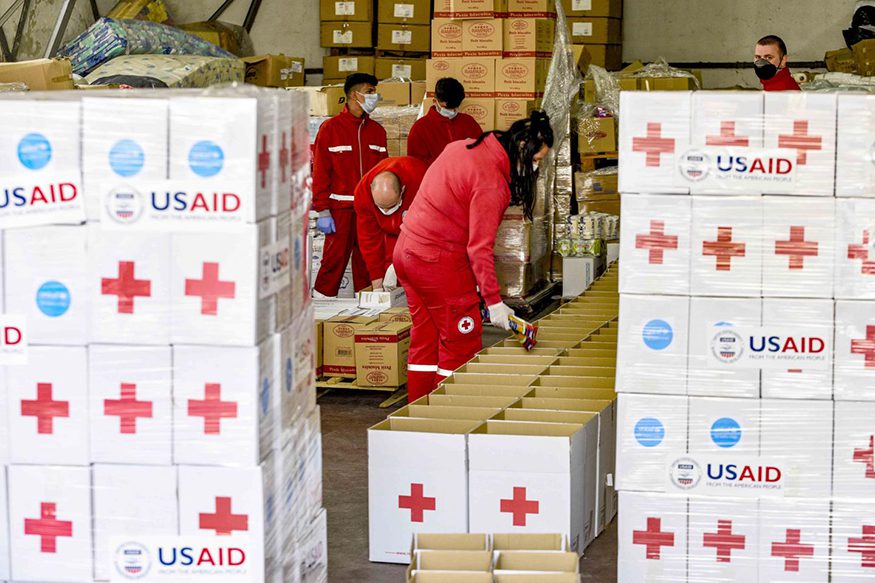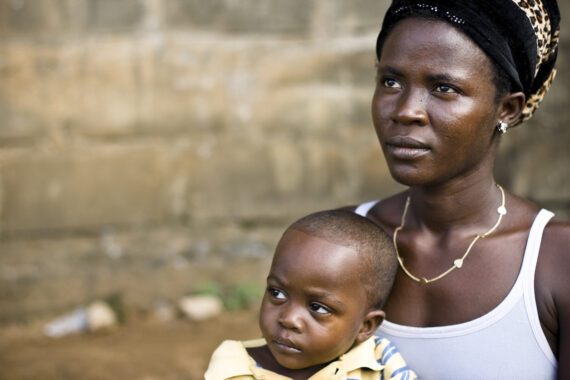By Jordan Teague and Rahma Sohail
This is the final installment of a five-part series on hunger in fragile contexts and how development assistance can enable people to improve their food security.
The road ahead will undoubtedly be hard, but there are ways that the United States and the rest of the global community can help people in fragile contexts as they seek to build a future without hunger, malnutrition, or a global pandemic.
The cases in this series show that fragile contexts can be found specifically in the Middle East, Latin America, and sub-Saharan Africa, but more universally anywhere in the world. This is because the primary cause of fragility is conflict and the COVID-19 pandemic, climate change, and weak government capacity also contribute. No human society is immune from such factors.
Bread for the World Institute described fragility and its main causes in our 2017 Hunger Report, Fragile Contexts, Resilient Communities. Drawing from our previous work, articles and research by international aid agencies, such as Concern Worldwide, IFPRI, and the World Bank, and interviews with subject matter experts, we offer the following key recommendations for a COVID-19 recovery plan in fragile contexts. The emphasis is on making assistance more effective in ending hunger.
- Recognize and invest in local capacities for resilience and governance
Any anti-hunger or other development effort, but especially those in fragile areas, must be planned and carried out in context-specific ways. As outside humanitarian workers have learned over the years, a one-size-fits-all approach does not work in different countries nor, quite often, in different regions of the same country. In addition, the effects of this drought may not be like those of the one 10 years ago, even in the same place.
Foreign assistance must focus on strengthening resilience in local populations to future disasters (natural and manmade) and recognizing and strengthening their local capacities to deal with them effectively and efficiently. More than a year into the COVID-19 pandemic that has led to national lockdowns, closed international borders, and decimated international travel, the importance of building resiliency and funding local capacity could not be more apparent.
The concept of “country-owned” development is not new, but in fragile contexts, perhaps especially where there is armed conflict, the process of shifting power to local communities and leaders may not have been completed or even begun. In these situations, donors can use the COVID-19 pandemic as an opportunity to redefine their relationships with local partners. It’s important to ensure that they are equipped to take ownership of programs and resources, and also that they have any support requested to hold their governments accountable for the basic services they should be providing their populations.
- Prioritize ensuring that policies work together, not against each other
All policies and actions—whether in the realm of economic development, humanitarian assistance, trade, security assistance, or diplomacy—must work together, rather than against each other or at cross-purposes. Otherwise, efforts to improve food security and nutrition in sustainable ways cannot succeed. Two brief examples help illustrate why this is so.
Providing food without considering the potential harm to smallholder farmers of flooding the market is likely to hinder the efforts of rural communities to adapt their agricultural practices to be more climate-resilient—and thus to avoid the next food emergency. Rebuilding schools and homes without pressing the fighters who destroyed them to declare a ceasefire and then enter genuine negotiations runs the risk of seeing the same families displaced, the same children unable to continue their education, the next year and possibly the year after that.
Donors also need to think through whether decisions about humanitarian assistance and international development in fragile contexts are coherent. One potentially difficult question is whether to withhold foreign assistance to press a government to meet a donor country’s policy priorities. Donors need to find the right balance between pressuring recipient countries on important issues—such as human rights violations—and maintaining assistance so as not to make the population worse off and in even greater need of assistance.
Aid effectiveness in fragile contexts requires a clear understanding of the many effects of policies, whether obvious or subtle and especially in humanitarian and development areas, and a willingness to adjust accordingly.
- Incorporate a climate-conscious lens
As we pointed out earlier in the series—for example, in the piece on countries in the Sahel in sub-Saharan Africa— climate change is a major contributor to fragility in many contexts. Climate change can be a “last straw” where deep poverty, armed conflict, poor government performance, and other factors have already created a fragile country or region. Therefore, many of the countries most affected by fragility are also those facing the brunt of the climate crisis.
All development aid and humanitarian assistance to climate-affected nations must be seen through a “climate lens” to ensure that it does not make matters worse, but instead works to mitigate the impacts of the crisis. Agencies must be mindful of how food systems are rebuilt in a post-COVID-19 world. Local food systems need more investment, especially from a climate-sensitive lens. Farmers need support to use agroecological and climate-smart agricultural techniques to adapt to the changing climate.
The other side of the coin is that in addition to supporting adaptation by countries that are most affected, the United States should take all measures necessary to limit its own climate impacts. Among the many reasons to do so is the contribution of greenhouse gas emissions to growing hunger and food insecurity.
The main lesson learned from this project is that there is no silver bullet to design and implement effective aid in fragile contexts, but that traditional donor/recipient relationships and siloed approaches have not worked in the past, and they will not work in the post-COVID-19 world.
It is time to reset the direction of the route the world is taking in its efforts to end hunger, especially in fragile contexts. It is time for a collaborative approach, from the grassroots up, to address the myriad causes of fragility. It is time to shift resources and power definitively into the hands of the people whose lives are affected. It is time to aspire to and implement a U.S. foreign policy that is more than “do no harm”—a strategy that seeks the highest good attainable for all.
Jordan Teague is interim co-director, policy analysis and coalition building, and Rahma Sohail was 2020 Crook fellow with Bread for the World Institute.



